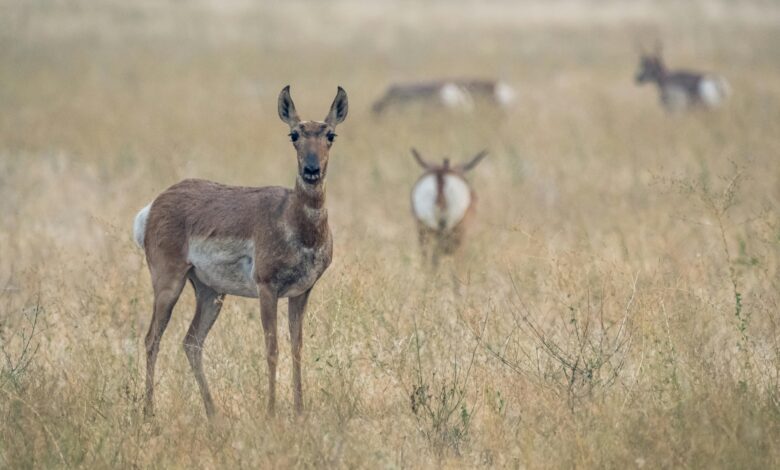
Have you been struck by the grace, agility, and speed of an antelope bouncing across the Savannah? Today, we will explore the world of Antelope X, a unique species. This majestic creature has a crucial role to play in its ecosystem. It captures the hearts of researchers and wildlife enthusiasts alike. This comprehensive guide will cover everything you need to know about Antelope X.
Evolution of Antelopes X
Antelope X has an evolutionary history that stretches back over millions of years. Fossil records show that their ancestors roamed Earth during the Miocene age. Over time, they adapted to the changing environments and developed unique traits that helped them survive.
Their survival has depended on their evolutionary adaptations. These include their powerful legs, which allow them to run quickly, and their keen senses, which detect predators. Antelope X have thrived in various habitats due to their adaptations.
Habitat and Distribution
Antelope X roams freely through vast landscapes in Africa’s grasslands and savannahs. Geographically, their range includes Kenya, Tanzania, South Africa, and other countries. Antelope X likes these areas because they have open spaces with abundant vegetation.
Antelope X is often seen grazing on these habitats in the cooler temperatures of early morning and late afternoon. The Antelope X tends to avoid dense woodlands and arid deserts. They prefer areas that are easy to spot.
Physical Characteristics
Antelope X has a truly amazing physical appearance. The average adult male weighs between 100 and 150 kilograms. Females are slightly lighter at 80 to 120 kilograms. The height of the adult males is between 1.2 and 1.5 meters.
Antelope X has a striking coat pattern. Their fur has a lovely blend of tawny-brown with white underparts accented by dark stripes that run down their sides. This coloration provides them with excellent camouflage and also adds to the majestic nature of their presence.
Behavior and social structure
Antelope X is social and often occurs in herds of up to a dozen animals. These herds usually consist of females, their young, and males.
Communication within the group is crucial to their survival. The herd communicates using a variety of vocalizations and body postures. They may even use scent marks to transmit information. During the breeding period, males use their horns as a means of dominance to establish hierarchy and thus win mates.
Diet and Feeding Habits
Antelopes eat primarily grasses, shrubs, and leaves. It is well-known that they are selective feeders and only consume the most nutritious plant parts. This selective grazing prevents overgrazing and helps maintain their habitats’ health.
Foraging behavior is variable throughout the day. Peak feeding hours are in the early morning and late afternoon when temperatures are cooler. When food is scarce during the dry seasons, animals may travel long distances to find fresh grazing.
Reproduction and lifespan
The reproductive cycle of the Antelope X species is a unique aspect of their biology. Males perform elaborate displays to attract females. These include vocalizations, scent marks, and physical displays. Once a couple forms a bond, they usually remain monogamous throughout the breeding season.
A single calf will be born after six to seven weeks of gestation. The mother will care for and protect the calf from birth until it can join the group. Antelope Xs can live for 15 years, but their lifespan can be shortened because of predation.
The dangers of predators and threats
Despite their agility and keen perceptions, Antelope X faces numerous dangers in the wild. Predators include lions (leopards), hyenas (and hyenas), and other animals. These predators often prey on young or weaker individuals. Antelope X relies heavily on its speed and ability to blend in with their environment to evade predators.
But human activities are even more dangerous. The loss of habitat due to agriculture and poaching for their hides and horns has significantly impacted their population. It is vital to ensure Antelope X’s survival by focusing on conservation.
Conservation State
Antelope X population trends are worrying. Despite some populations being stable, others have suffered significant declines due to the above threats. Conservation groups are working hard to protect their habitats, enforce anti-poaching legislation, and raise awareness of the importance of preserving this species.
For the Antelope X to survive, we must take steps such as establishing protected zones, conducting research into their ecology and behavior, and involving local communities in conservation efforts.
Ecosystem role
Antelope X plays an important role in maintaining their ecosystems. As grazers, they control vegetation growth and prevent overgrowth, which could lead to fires or the decline in other plant species. By allowing different plant species to flourish, their grazing encourages plant diversity.
Antelope X also serves as a food source for several predators. It is, therefore, important to the overall health and function of the food chain. Their presence in an ecosystem indicates a functioning and healthy environment, making them keystone species.
Unique Adaptations
Antelope X has unique adaptations that set it apart from other antelopes. The powerful legs of Antelope X allow it to reach speeds as high as 60 kilometers per hour. This makes them one of the fastest animals in the habitat. The speed they have is essential for avoiding predators and navigating the often difficult environments.
Antelope X have developed an acute sense of hearing and scent in addition to their physical strength. These senses allow them to detect predators far away, giving them plenty of time for escape. Communication through vocalizations, scent markings, and other means of communication increases the chances of their survival.
Human interactions
The Antelope X has been a part of local culture and tradition for centuries. In some places, the animals are seen as symbols of grace and agility. They appear frequently in folklore, art, and folklore. Nevertheless, these interactions were not always positive.
Ecotourism can positively impact the economy of Antelope X, as it allows wildlife enthusiasts to travel and observe animals in their natural habitats. This tourism form can generate substantial revenue for local communities to encourage conservation efforts. The destruction of habitat for agriculture and overhunting has led to a decline in their population.
Research and Studies
Recent studies of Antelope X have provided important insights into its behavior, genetics, ecology, and genetics. Researchers constantly discover new aspects of these factors, such as migration patterns and social structures. They also study how they respond to environmental changes. These findings will be crucial in developing conservation strategies.
The ongoing research projects will monitor Antelope X populations, assess habitat conditions, and study the effects of climate change. The success of these projects depends on collaboration between scientists and conservationists as well as local communities.
Future Outlook
Antelope X’s future depends on our collective efforts to preserve and protect their habitats. Some experts are optimistic that the species will recover due to successful conservation programs, while others are concerned about continuing threats.
Some potential conservation strategies are expanding protected areas and restoring degraded habitats. They could also implement stricter measures against poaching. For Antelope X to survive, the community and the public must be involved in awareness campaigns.
Summary
Antelope X represents the beauty and complexity of nature. They capture our imagination with their evolutionary story and their role within ecosystems. They also remind us of the importance of biodiversity. We can contribute to the resilience and health of our ecosystems by protecting and understanding Antelope X.
FAQs
What habitat does Antelope X inhabit? Antelope X mainly inhabits the grasslands and savannahs of Africa, which have abundant vegetation.
Antelope X is a predator that helps maintain the balance of its food web by preventing vegetation from growing and promoting plant biodiversity.
What are the major threats facing Antelope X? The most significant threats for Antelope X are habitat loss caused by agriculture, illegal poaching, and competition with livestock to graze on land.
What is Antelope X’s life expectancy? Antelope X has a lifespan of up to 15 years and 15 years, but this can be shortened because of predation.
Is there anything unique about Antelope X? Antelope X has unique behaviors like selective feeding, complex vocalizations, and elaborate rituals for mating to attract mates.




